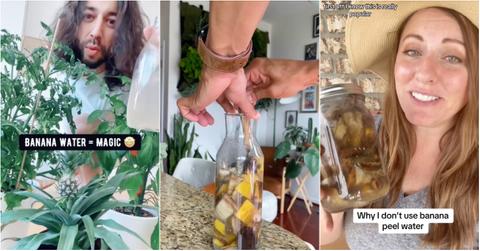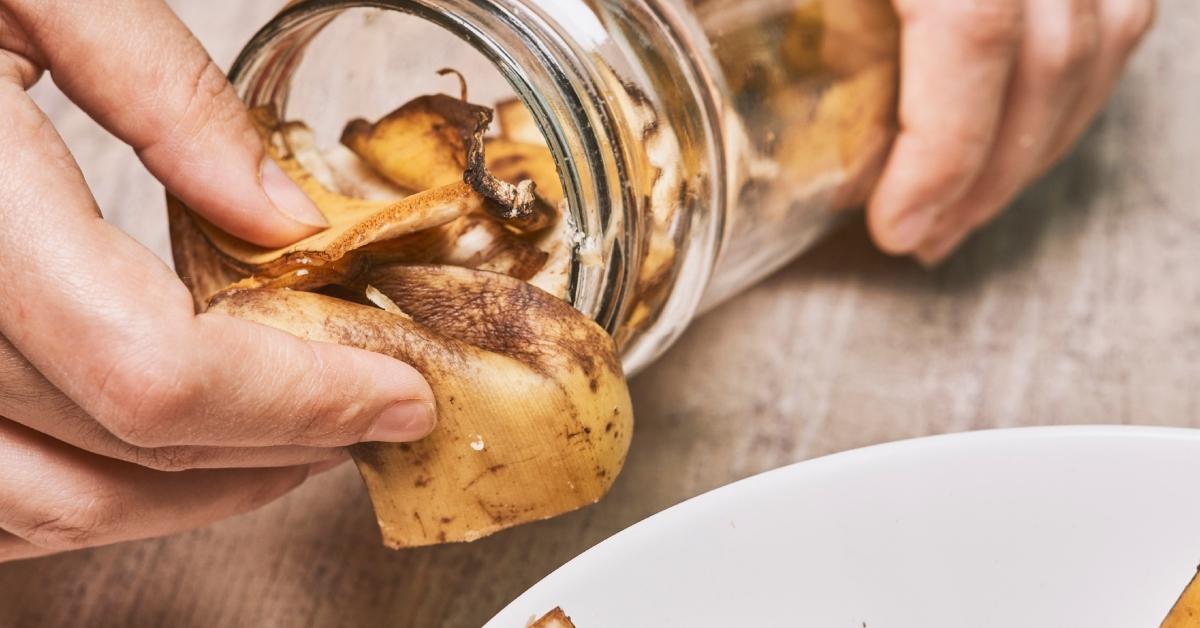Gardeners Can't Decide If the "Banana Peel Water" Trend Is Good for Plants or Not
Plant parents are making banana peel water to nourish their plants, but it might not be good for them.
Published March 19 2024, 10:40 a.m. ET

You may have seen enthusiastic plant parents on TikTok rave about feeding their plants banana water, which involves soaking banana peels in water to create a supposedly nutrient-rich concoction. Although the idea sounds like a great environmental win, some believe that it might be better sticking to throwing the bananas in the compost and using store bought fertilizer instead.
So, here is everything you need to know about how banana water is made and used in gardening, and the possible risks and benefits that go along with the practice.

Is banana peel water good for your plants?
There are mixed opinions about whether or not you should use banana peel water on your plants. Some believe it is a great practice for promoting growth, and others deem it unnecessary.
Banana peel water became popular on TikTok as a way to give your plants more nutrients while watering. In a video posted by @sustainabilitymattersva, the TikTok creator recommends that instead of throwing out banana peels, chop them up and let them soak in water to create a "nutrient-rich homemade fertilizer" with concentrated phosphorus, magnesium, potassium, and calcium.
According to Reader's Digest, plant parents have been delving into these at-home fertilizers for a long time now, with coffee grounds and eggshells being the notable predecessors to banana peels. Some gardeners believe that using banana water could be helpful for stem strengthening, increasing plant growth, preventing rotting, and keeping the plants from drying up. Banana water can be especially good for tomato plants, roses, orchids, peppers, succulents, air plants, and banana trees.
There are several other methods for using bananas in your garden besides infusing water. According to Masterclass, adding banana peels to an existing compost pile with other organic material will create a great fertilizer mix. Another option is to blend wet banana peels in a food processor to create what Masterclass calls a "fertilizer slurry," which then can be buried in the soil. And lastly, you can cut the peels into small pieces and bury them in the soil, which may deter garden pests.
Reader's Digest explains that using bananas will most likely promote a lot of growth for fruiting and flowering plants because of the potassium content. However, it's important to remember that most banana crops are sprayed with pesticides, so if you keep an organic garden, this might not be something you want to try.

Some say banana peels might not be as effective as regular fertilizer.
Although finding ways to reuse food waste is not a bad idea, using banana peels in your garden might not be as effective as some say. According to The Spruce, potassium cannot be extracted from the banana peels by soaking them in water, meaning the plants may not actually be absorbing any nutrients when watered with banana water. Nutrient absorption happens during decomposition, where microbes and fungi can break down the peels and extract the potassium.
According to Better Homes & Garden, using banana peels could end up doing more harm than good. Putting banana peels in your soil can attract pests such as cockroaches while the peel decomposes.
Another risk to using banana peels and banana peel water in your soil is the pesticides. The banana peels are usually covered in chlorpyrifos, a common insecticide, which is not usually a problem because it doesn't interfere with the edible inside of the banana. The Spruce notes that if you're using banana peels as fertilizer, the pesticide could contaminate your plants, which can be especially concerning if you are growing edible crops.